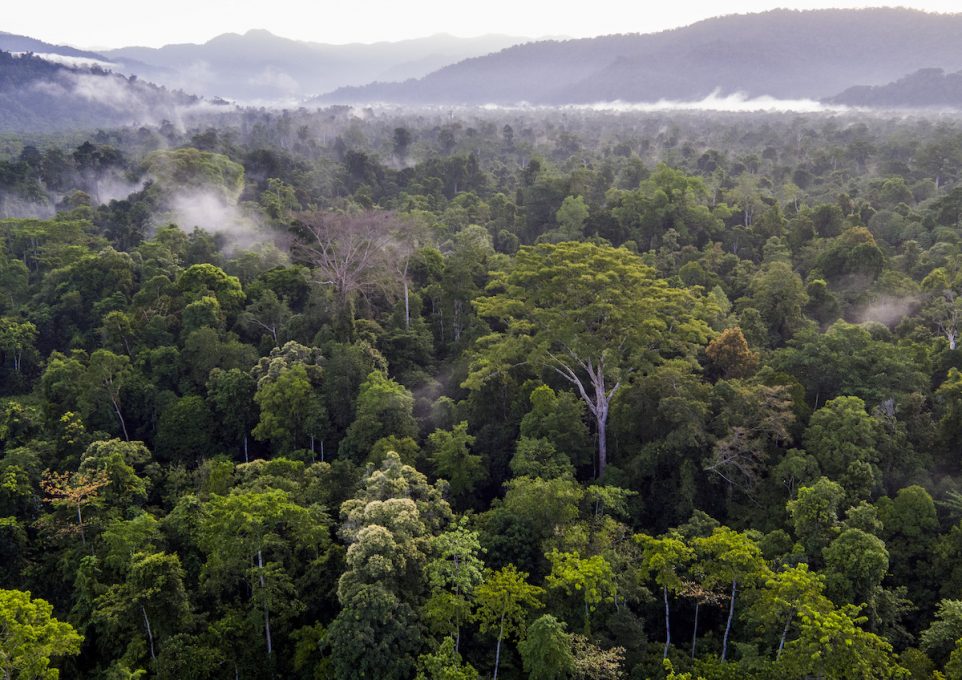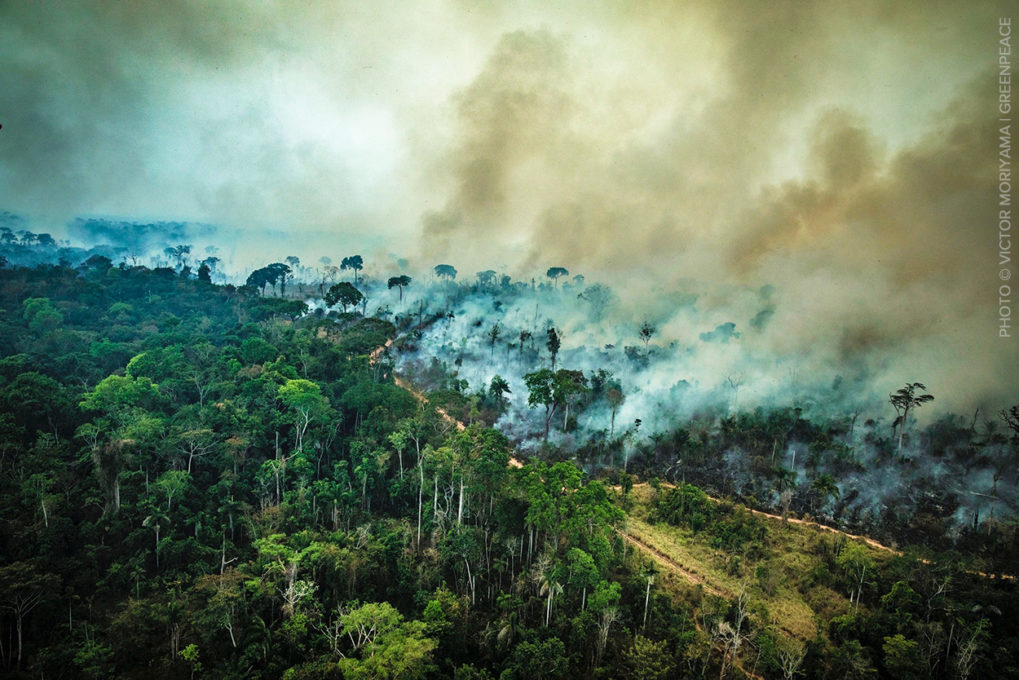Rainforests are home to half the world’s biodiversity.
Rainforests provide critical habitat for millions of species large and small, from elephants to insects, yet they cover just 12% of the Earth’s land surface.
We depend on rainforests for life-sustaining clean air, water, rainfall, and global carbon storage. For thousands of Indigenous and local communities, rainforests are home, providing livelihoods for hundreds of millions globally. In fact, Indigenous peoples have relied on and successfully protected rainforests for many generations.
From the rainforests of Indonesia, to the Amazon and the Congo, rainforests are our best defense against climate chaos— and that makes them some of the most priceless ecosystems on Earth.
Indonesia’s Leuser Ecosystem is a world unto itself.
Indonesia’s rainforests are some of Earth’s most biologically and culturally rich landscapes. Indonesia is the world’s largest archipelago, consisting of almost 18,000 islands and the largest expanse of rainforest in Asia, with hundreds of distinct Indigenous communities and languages and over 4,000 vertebrate species — including Sumatran tigers, pygmy elephants, rhinoceroses, and orangutans.
Within Indonesia, the six-and-a-half million acre Leuser Ecosystem is a world unto itself — a rich and verdant expanse of rare, unbroken lowland rainforest, cloud-draped mountains, and steamy peat swamps.
The Leuser Ecosystem is among the most ancient and life-rich ecosystems ever documented. A world-class hotspot of biodiversity, it is the last place on Earth where Sumatran orangutans, elephants, tigers, rhinos, and sun bears still roam the same habitat. It’s widely acknowledged to be among the most important areas of intact rainforest left in Southeast Asia.

The Leuser Ecosystem stretches across the provinces of Aceh and North Sumatra on the island of Sumatra. These provinces are home to a diverse range of rural communities, many of whom have lived in the region for generations and depend on the uniquely biodiverse forest ecosystem for their food, clean water, and livelihoods.
But the Leuser Ecosystem exists at a tenuous crossroads. Despite being technically protected under Indonesian national law, industrial development for palm oil, pulp and paper plantations and mining continues to threaten the entire ecosystem, as well as the well-being of millions of Acehnese people who depend on it.
The Amazon Rainforest is the largest tropical rainforest on Earth.
Home to an estimated 30 percent of all known species on the planet, with more being discovered every year, the Amazon is the most biodiverse land-based ecosystem on Earth. The Amazon is also one of the largest terrestrial carbon sinks on the planet, playing a critical role in the regulation of the global climate by pulling carbon pollution out of the atmosphere.Indigenous peoples have been living within and protecting the Amazon for millennia. In fact, millions of Indigenous peoples currently live in the Amazon Rainforest, making up hundreds of tribes that each have their own language, culture, and territory. Some tribes have had regular contact with outsiders for hundreds of years, while other tribes remain uncontacted by the outside world to this day. The cultural practices and expert knowledge of Amazonian Indigenous communities have played a critical role in the protection of the Amazon for countless generations, and following Indigenous-led solutions is even more important today.
The global importance of the Amazon Rainforest can’t be overstated, but it has long been under threat. As roads begin to incur into the forest, deforestation follows, primarily as a result of cattle ranching, soy, and timber production; fossil fuel expansion; mining, and large-scale hydroelectric projects. That’s why RAN and many others have fought hard to protect the Amazon from corporate looters since the early 1980s.
Indigenous peoples have led the way on some significant gains in the protection of the Amazon, but threats to the forest have never gone away. Global capital continues to flow into industries driving deforestation and the brands marketing products made at the rainforest’s expense. Business interests and investments have fueled the intentionally-set fires that have ravaged the Amazon, pushing it toward a tipping point from which it cannot recover.

The Congo Rainforest stretches across 6 countries.

The Congo is the second largest rainforest in the world: at close to 450 million acres, it stretches across 6 countries in Central Africa, including Cameroon, Central African Republic, the Democratic Republic of Congo, Equatorial Guinea, and Gabon.
The wildlife of the Congo is a big part of what makes it different from other rainforests. The Congo is a patchwork of rainforest, swamps, and savannahs. Forest elephants and other herbivores keep new tree growth low, making tree density lower and allowing larger, more mature trees to thrive. These large trees act as a carbon sink and are of critical importance to maintaining a healthy global climate.
The heart of the Congo Rainforest is the Congo River, feeding life throughout the forest. The ‘Pygmy’ People of the Congo have traversed this river for over 50,000 years. The Ba’Aka live as hunter-gatherers in the rainforest as their ancestors did before them. But today, the Forest People of the Congo suffer from discrimination, land theft, and project development without their consent.
The Congo provides water and food to more than 75 million people and is home to nearly 150 ethnic groups. Nonetheless, deforestation in the Congo has increased sharply over the last decade, with logging and agriculture being two of the biggest drivers. Logging roads have also increased poaching, contributing to a 60% decline in the population of elephants over the last 50 years.
In recent years, the Democratic Republic of the Congo has created a plan to auction off 30 oil and gas blocks in the Cuvette-Centrale Peatlands in the Congo Basin forest — the world’s largest tropical peatland. This would lead to catastrophic rights violations, deforestation, biodiversity loss, and carbon emissions, and would negatively impact all of Africa’s climate, potentially causing widespread social and environmental shocks.












